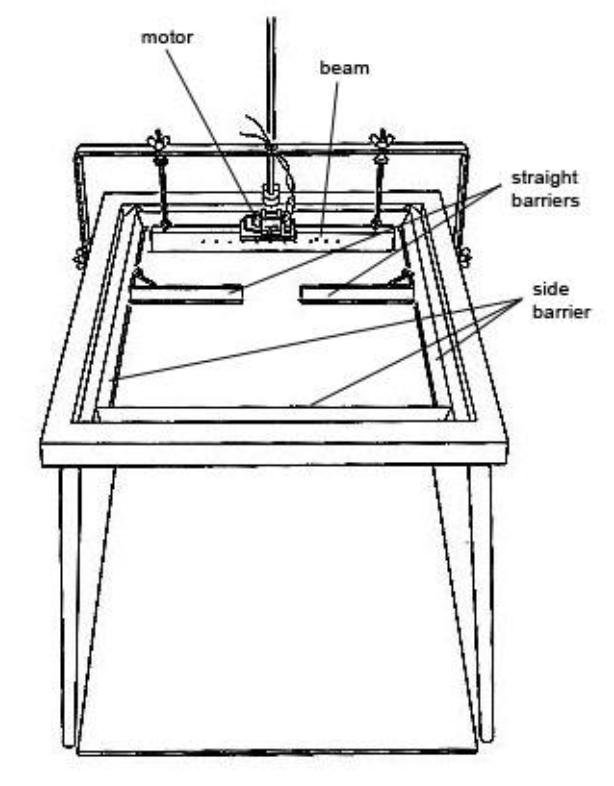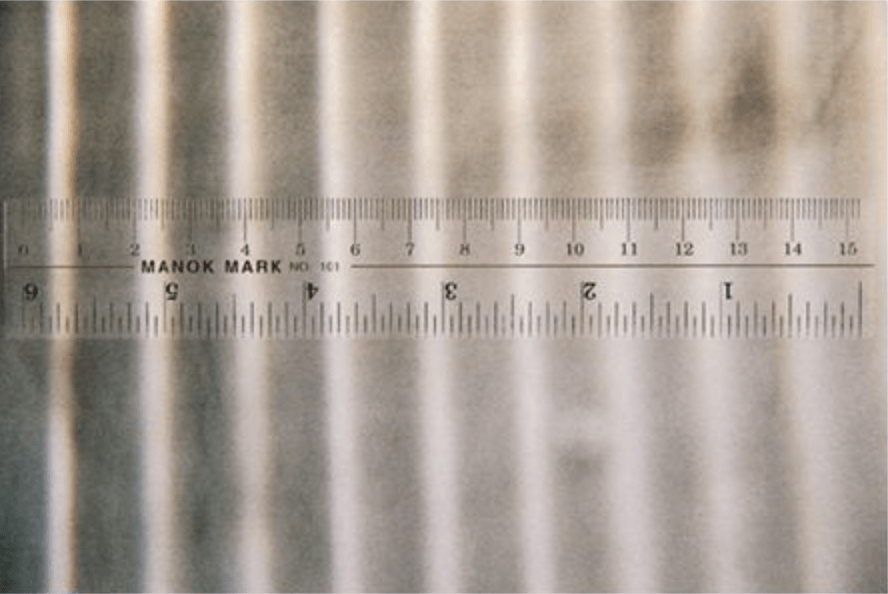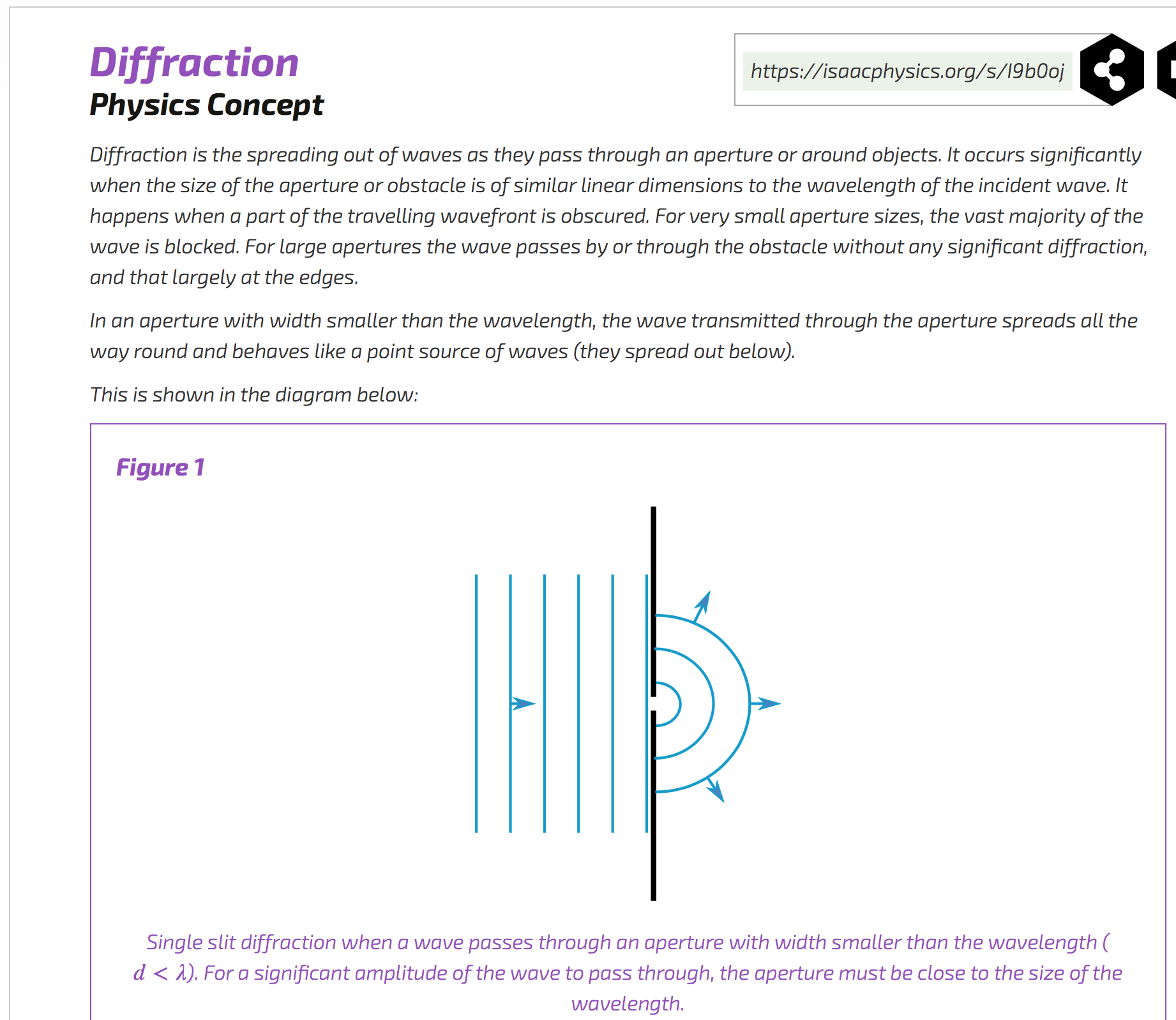Objectives:
- To understand and interpret graphical representations of transverse and longitudinal waves
(i) diffraction of all waves
(you will be expected to know that diffraction effects become significant when the wavelength is comparable to the gap width)
(ii) techniques and procedures used to demonstrate wave effects using a ripple tank
Diffraction is the slight ‘bending of light’ as it passes around the edge of an object. The amount in which the wave bends is dependent on the relative size of the wavelength to the width of the opening to which it passes through.
The opening in which light passes through is often called an aperture, typically the smaller the aperture the greater the diffraction (or spreading out of waves), but the closer the aperture is to the wavelength of the light itself will give the maximum amount of diffraction;
The three diagrams shown above show the wavefronts of each wave. The distance between wavefronts represents the wavelength of the wave. As you can see by the top left image, the aperture is much larger than the wavelength, so there is minimal spreading out of the wave (final diffraction). In the top right image the aperture is a similar size to the wavelength and so you get maximum diffraction occurring. The lowers image shows that the same things happens to waves of larger wavelength but that a larger aperture would be required for high levels of diffraction.
Watch this video to get a guided approach of diffraction using a ripple tank:
Techniques used to demonstrate the speed of waves using a ripple tank

The previous video shows diffraction quite clearly using a ripple tank.This is a piece of apparatus in which a bath of volume of water is contained in a shallow tank.
Placed just touching the surface at one end of the water is a rod, on top of this rod is a motor which has the ability to rotate when a potential difference is applied across it.
Connecting up a frequency generator will enable the motor to rotate, the motor will vibrate the rod at the rate that is given by the frequency generator. The waves travel away from the rod and have a certain wavelength (depending on the rate the motor vibrates). If this is carried out in a darkened room with a lamp placed above the ripple tank and shining light downwards, beneath the ripple tank, the wavefronts of the waves will be visible. The wavefronts will appear as shown in the video given above.
How can you measure the wavelength of these waves accurately?
Using a stroboscope connected to the frequency generator, will allow flashes of light that go off at the same rate (frequency) as the motor and hence the wavefronts themselves. This setup will make the wavefronts appear static. By putting a piece of paper under the ripple tank, marking any many waves that are visible as possible will enable the distance of all of the wavefronts to be measured. Dividing this value by the number of complete waves that are visible will give the wavelength.
Measuring the speed of the wave
The frequency of the wave can be determined by reading off the frequency generator. If the wavelength is measured as per the instructions above, the wave speed equation can be used, .
13.3 / 8 = 1.6625
Example: If the frequency the motor was set at 30 Hz, using the following image, what is the wave speed of the wave?
Try the question before looking at the answer.
Answer: Firstly, the wavelength needs to be measure. You should measure the distance from the first wavefront to the last one. Using the ruler on the image, this distance should be , this number then needs to be divided by how many waves there are. If you count carefully, there are 8 waves in this distance (not 9).
So, the wavelength,
Using the wave speed equation:
For more information read the information provided from http://practicalphysics.org/ripple-tank-and-accessories.html
Use this IsaacPhysics.org webpage for more information and some exemplar questions:

Further reading:
- Isaac Physics – Diffraction – This is a reading resource
- Research the relationships between Francis Crick, James Watson and Rosalind Franklin.
- Search for applications of diffraction in articles showing where the property is used in science.
- https://isaacphysics.org/concepts/cp_diffraction



You must be logged in to post a comment.